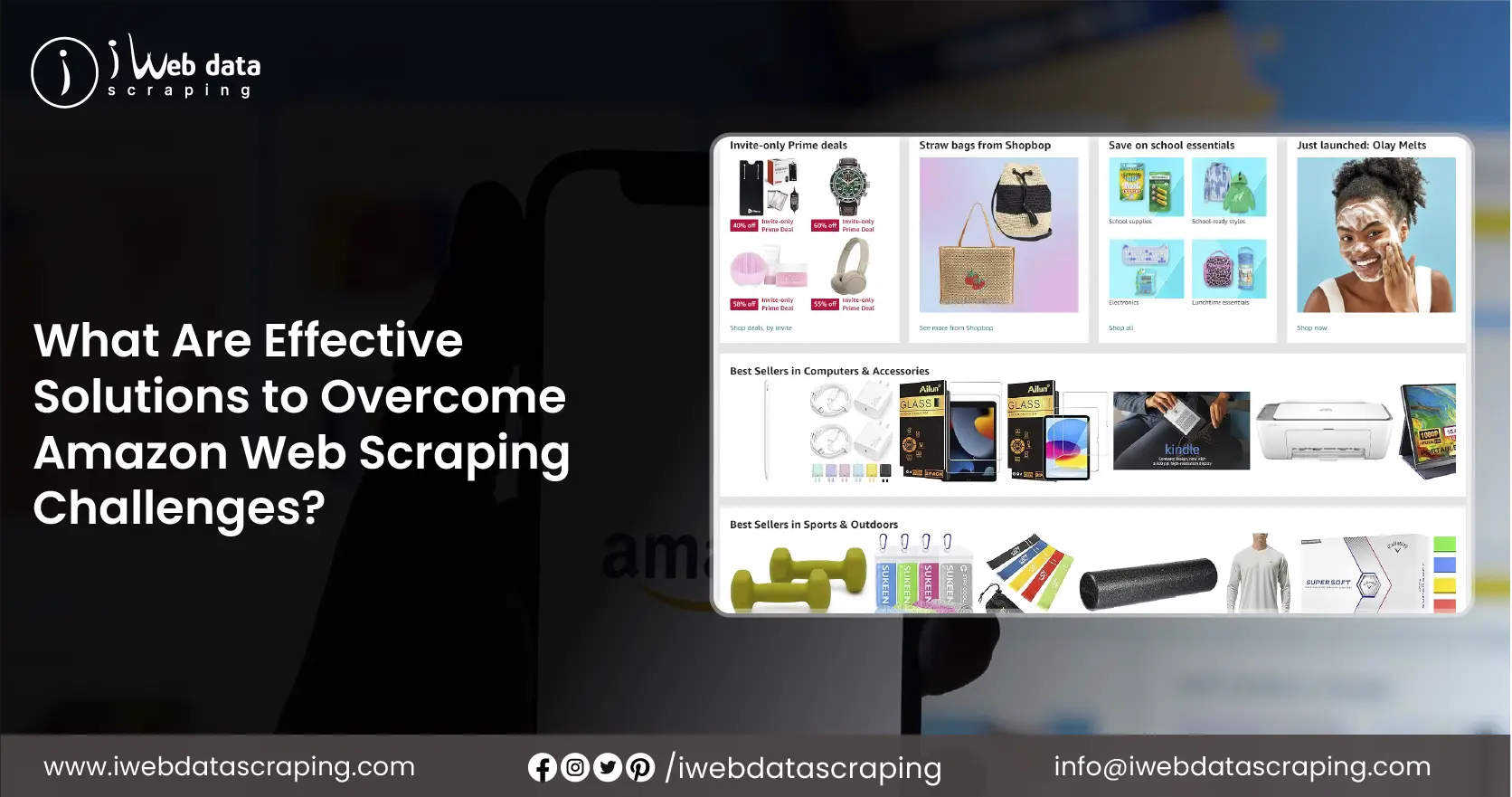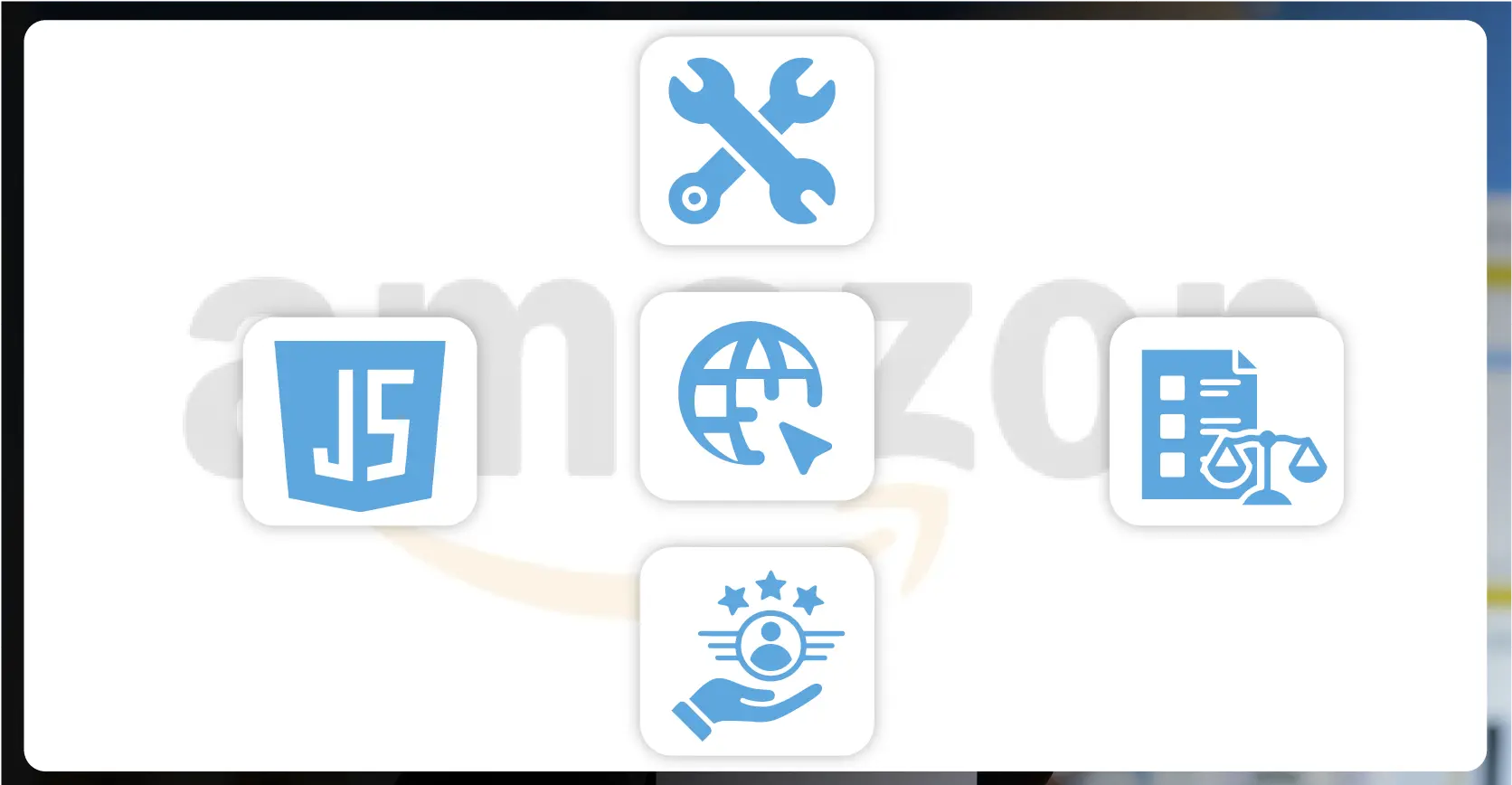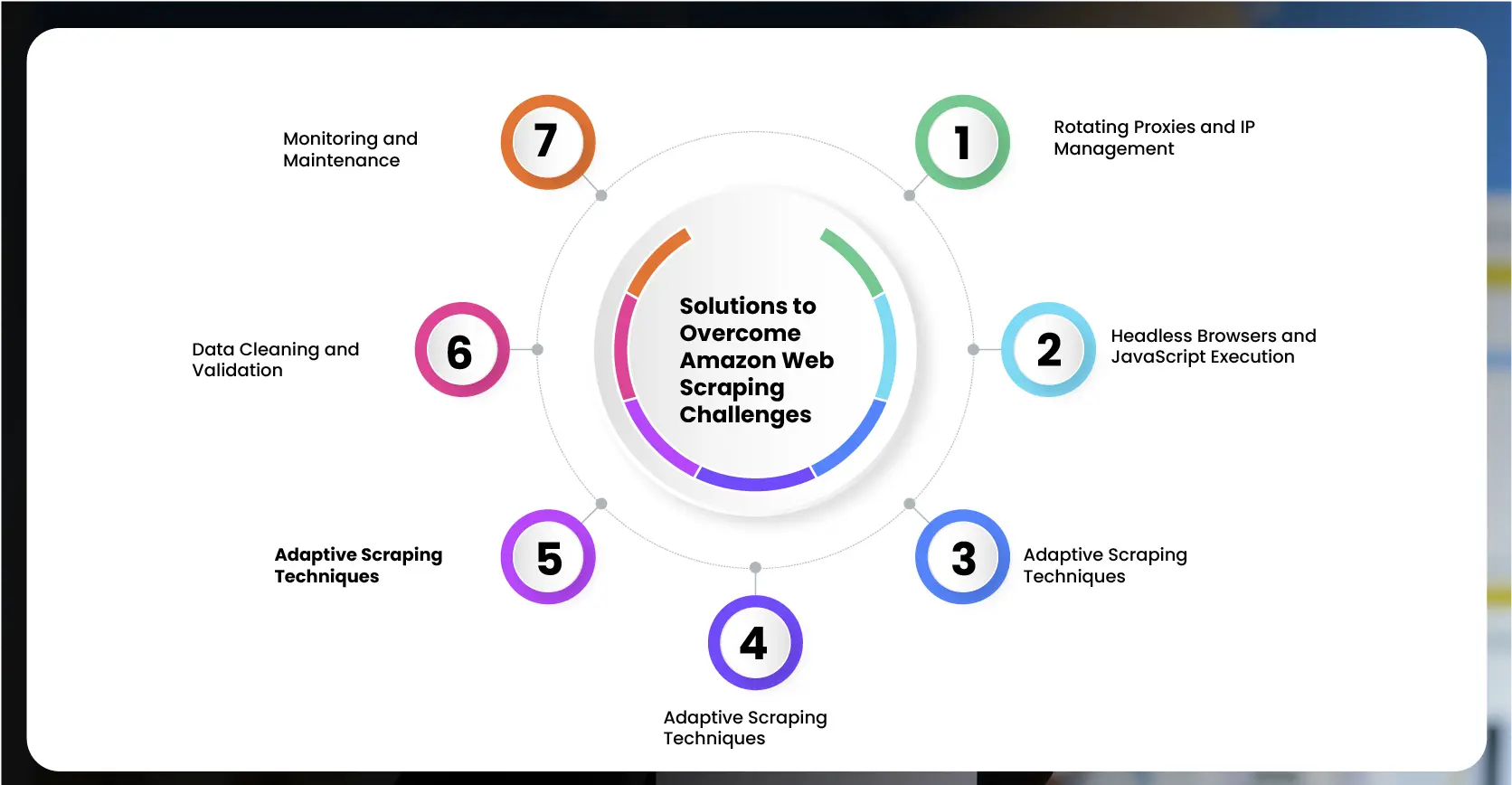Effective Solutions to Overcome Amazon Web Scraping Challenges

Amazon scraping is a powerful technique for collecting data from the e-commerce giant's vast product listings, reviews, and pricing information. Businesses and researchers use this data to gain insights into market trends, competitive analysis, and customer behavior. Companies can optimize their product offerings, pricing strategies, and marketing efforts by systematically extracting information. However, scraping Amazon data has its challenges.
One of the primary Amazon web scraping challenges is robust anti-scraping measures. These include IP blocking, CAPTCHA challenges, and dynamic content loading, making extracting data efficiently brutal. Amazon's frequently changing website structure can also disrupt scraping scripts, requiring constant maintenance and updates. Ethical and legal considerations also play a crucial role, as violating Amazon's terms of service can lead to account bans and legal repercussions.
Despite these challenges, with the right tools, techniques, and ethical practices, Ecommerce Data Collection remains a valuable resource for actionable insights and competitive advantage.
5 Key Amazon Web Scraping Challenges

Web Scraping Ecommerce Data involves collecting data from the Amazon website for various purposes, such as market analysis, competitive research, and customer insights. However, this process has several challenges that must be addressed to ensure successful and ethical data collection. Here are five key challenges:
Anti-Scraping Mechanisms:
- IP Blocking: Amazon employs IP blocking to prevent automated requests from being processed. If a scraper makes too many requests in a short period, Amazon can block the IP address.
- Rate Limiting: To prevent scraping, Amazon limits the number of requests from a single IP address over a specific period.
- CAPTCHA Challenges: Amazon uses CAPTCHA to distinguish between human users and bots. Extractors must solve these challenges to continue collecting data, which requires advanced techniques.
Dynamic Content and JavaScript Rendering:
- AJAX and JavaScript: Amazon dynamically loads content using AJAX and JavaScript, which means that traditional HTML parsing methods may not work. Scraping tools need to execute JavaScript to access the full content of the page.
- Infinite Scrolling: Product listings and reviews may be loaded via infinite scrolling, requiring scrapers to simulate user interactions to load all available data.
Frequent Website Changes:
- HTML Structure Updates: Amazon frequently updates its website layout and HTML structure. These changes can break scraping scripts, requiring constant monitoring and updates to the scraping code.
- Dynamic URLs: Product URLs and page structures can change dynamically, making maintaining a consistent scraping approach challenging.
Legal and Ethical Considerations:
- Terms of Service Violations: Scraping Amazon can violate its terms of service, leading to legal consequences and potential bans. It's crucial to understand and respect Amazon's policies regarding data usage.
- Data Privacy: To avoid legal issues, handling personal data, such as customer reviews, requires adherence to data privacy regulations like GDPR and CCPA.
Data Quality and Integrity:
- Incomplete Data: Due to anti-scraping measures and dynamic content, extractors may collect incomplete or inconsistent data, affecting the reliability of the analysis.
- Duplicate Data: Managing duplicate entries and ensuring data accuracy using Amazon data scraping services requires robust data cleaning and validation processes.
Solutions to Overcome Amazon Data Collection Challenges

Here are detailed solutions to overcome the challenges while you Scrape Ecommerce Data:
Rotating Proxies and IP Management:
- Use Proxy Pools: Employ a pool of rotating proxies to distribute requests across multiple IP addresses. This helps avoid detection and IP blocking by simulating requests from different locations.
- Residential Proxies: Use residential proxies that appear as regular users' IP addresses, which reduces the likelihood of being flagged as a bot.
- Rate Limiting: Implement rate limiting to control the frequency of requests from each IP address, mimicking human browsing behavior and reducing the risk of IP bans.
Headless Browsers and JavaScript Execution:
- Headless Browsers: Headless browsers like Puppeteer or Selenium render JavaScript content. These tools can simulate user interactions such as scrolling and clicking, allowing for the extraction of dynamically loaded content.
- Page Interactions: Script the necessary interactions to load all data, such as clicking ""Load More" buttons or navigating through pagination, to ensure complete data retrieval.
Adaptive Scraping Techniques:
- HTML Structure Detection: Develop adaptive scraping scripts that detect and adjust to Amazon's HTML structure changes. Use flexible selectors and patterns to locate data elements even if the layout changes.
- Machine Learning Models: Implement machine learning models to recognize patterns and predict changes in the HTML structure, helping to maintain the functionality of scraping scripts over time.
Handling CAPTCHAs and Anti-Bot Measures:
- CAPTCHA Solving Services: Integrate CAPTCHA-solving services or APIs that can automatically solve CAPTCHA challenges, enabling uninterrupted scraping.
- Human-in-the-Loop: For more complex CAPTCHA scenarios, employ a human-in-the-loop approach, in which human operators assist in solving CAPTCHA challenges as needed.
Data Privacy and Legal Compliance:
- Legal Consultation: Consult with legal experts to ensure your scraping activities comply with Amazon's terms of service and relevant data privacy laws such as GDPR and CCPA.
- Respect Robots.txt: Adhere to the guidelines specified in Amazon's robots.txt file, which indicates the permissible areas of the site for web crawlers to access.
Data Cleaning and Validation:
- Duplicate Detection: Implement algorithms to detect and remove duplicate entries, ensuring the accuracy and consistency of the scraped data.
- Data Validation: Perform thorough validation checks on the scraped data to identify and correct errors, such as missing fields or incorrect formats, improving the overall data quality.
Monitoring and Maintenance:
- Regular Updates: Ecommerce Data Scraping Services continuously monitor Amazon's website for changes in its structure or layout. Update your scripts promptly to accommodate these changes and maintain uninterrupted data extraction.
- Automated Alerts: Set up automated alerts to Extract Amazon data and notify you of any issues or changes detected during the scraping process. This allows for quick responses and script adjustments.
By implementing these solutions, businesses can effectively navigate the complexities of Amazon data extraction, ensuring robust, ethical, and compliant data extraction processes.
Conclusion: Amazon web scraper offers valuable insights for market analysis, competitive research, and customer understanding, but it comes with significant challenges, such as anti-scraping measures, dynamic content, frequent website changes, and legal considerations. Overcoming these requires robust solutions, including rotating proxies, headless browsers, adaptive scraping techniques, CAPTCHA handling, and strict compliance with legal standards. Ensuring data quality through validation and regular monitoring is essential. By addressing these challenges with advanced techniques and ethical practices, businesses can Scrape Amazon Data, driving strategic decision-making and maintaining a competitive edge in the e-commerce landscape.
Discover unparalleled web scraping service or mobile app data scraping offered by iWeb Data Scraping. Our expert team specializes in diverse data sets, including retail store locations data scraping and more. Reach out to us today to explore how we can tailor our services to meet your project requirements, ensuring optimal efficiency and reliability for your data needs.



